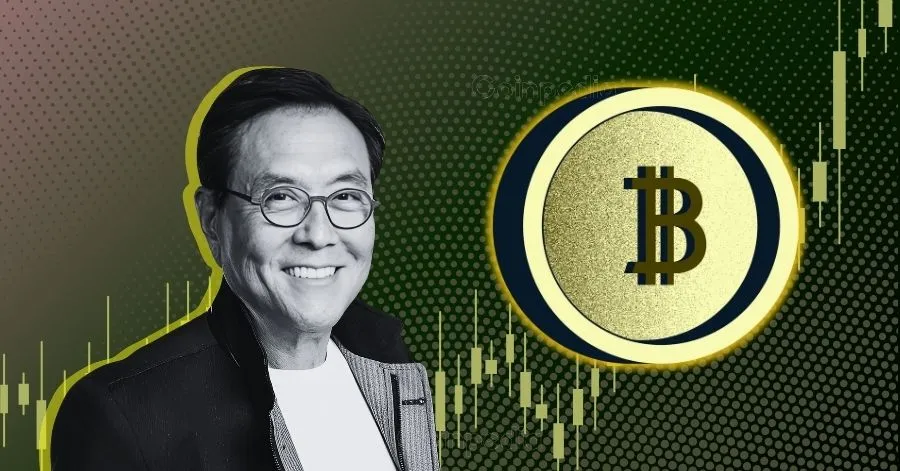Robert Kiyosaki’s Bitcoin Prediction Amid U.S. Financial Turmoil: An In-Depth Analysis
Robert Kiyosaki, the best-selling author of *Rich Dad Poor Dad*, has made a series of bold and highly publicized forecasts that merge an impending U.S. financial collapse with a soaring Bitcoin price. His vision projects Bitcoin reaching a staggering $1 million per coin within the next decade or by 2035, set against what he calls the “biggest financial collapse in history.” This analysis delves into Kiyosaki’s claims, the economic context he references, and the broader implications for investors and markets.
—
Kiyosaki’s Core Prediction: Bitcoin at $1 Million by 2035
Kiyosaki’s forecast anticipates Bitcoin will multiply dramatically in value, possibly surpassing $1 million per coin by 2035. This is a continuation of his earlier, slightly more conservative short-term outlook of Bitcoin hitting $200,000 within 2024. His assertion is not based on mere optimism toward cryptocurrency but instead arises from a dire concern about traditional fiat currencies, particularly the U.S. dollar.
Supporting his prediction, Kiyosaki highlights:
– Growing public debt: The United States faces soaring national debt, which he suggests is unsustainable.
– Hyperinflation: He claims the U.S. dollar is already showing signs of hyperinflation, eroding purchasing power.
– Structural economic vulnerabilities: Including rising unemployment rates, potential pension system collapse, and a faltering bond market.
According to Kiyosaki, Bitcoin, along with gold and silver, represents a “safe haven” asset class that can preserve and grow wealth when fiat currencies lose value.
—
The Context: Is the U.S. Economy on the Brink of Collapse?
Kiyosaki paints a picture of an economy spiraling toward what he terms the “greatest financial collapse in history” or a “Greater Depression,” emphasizing that:
– The Federal Reserve and U.S. Treasury are operating under what he calls a “criminal” disregard for fiscal responsibility, using monetary policy that inflates debt levels.
– The trust in the dollar is eroding swiftly, accelerated by government stimulus efforts, asset purchase programs, and aggressive debt financing.
– Inflationary pressures are mounting, with consumer prices and asset bubbles indicating economic overheating.
While mainstream economists debate the timing and severity of such downturns, Kiyosaki’s warnings align with a segment of financial commentators who believe the current monetary system is structurally flawed and ripe for a crisis.
—
The Role of Bitcoin in This Economic Scenario
In Kiyosaki’s scenario, Bitcoin emerges as the primary beneficiary of this crisis. His rationale includes:
– Bitcoin’s finite supply of 21 million coins offers protection against inflation, unlike fiat currencies that can be printed at will.
– Its decentralized nature ensures that it isn’t subject to government manipulation or political interference.
– The growing institutional adoption and inflows from ETFs and liquidity surges underpin a foundation for a sustainable price rally.
– Bitcoin acts as “the easiest money ever,” offering unprecedented opportunities for wealth building, even from fractional ownership (e.g., owning 0.01 BTC).
Kiyosaki urges investors to shift their assets from depreciating fiat currencies into cryptocurrencies and precious metals before hyperinflation and financial system collapse devastate traditional savings.
—
Complementary Predictions: Gold and Silver as Corollaries
Beyond Bitcoin, Kiyosaki expects precious metals to undergo significant price increases:
– Gold prices could shoot past $30,000 per ounce.
– Silver may triple from its current $35 price level within the year.
These metals are traditionally regarded as hedges against inflation and economic instability, aligning well with Kiyosaki’s thesis that fiat currencies are losing value rapidly.
—
Financial Markets and Cryptocurrency: Realistic or Overoptimistic?
Kiyosaki’s forecast, while ambitious, sparks debate about plausibility:
– Bitcoin’s volatility poses risks, and reaching $1 million would require sustained adoption, regulatory support, and global economic dynamics aligning favorably.
– Economic collapse timing is uncertain, and many analysts argue that the U.S. economy remains resilient, with interventions possible to avoid a depression.
– Regulatory environment: Increasing scrutiny over cryptocurrencies can introduce challenges, yet growing mainstream financial interest (institutional investments, ETFs) provides a counterbalance.
Nevertheless, Kiyosaki’s predictions underscore a growing narrative that traditional monetary policy may not suffice to maintain economic stability, pushing investors toward alternative assets.
—
Implications for Investors: Strategic Takeaways
For investors navigating this landscape, several points emerge from Kiyosaki’s perspective:
—
Conclusion: A Stark Warning Coupled with a Vision for Bitcoin’s Future
Robert Kiyosaki’s forecast of Bitcoin skyrocketing to $1 million against the backdrop of a historic financial collapse delivers a compelling narrative intertwined with warnings of systemic fiat currency failures. Whether viewed as prescient or alarmist, his projections echo a broader sentiment questioning the sustainability of current economic policies and monetary frameworks.
For those attuned to this perspective, Bitcoin and precious metals stand out not just as investment vehicles but as essential components for protecting wealth amid economic uncertainty. The key takeaway is the shift from traditional reliance on fiat to assets with inherent scarcity and resistance to manipulation—a transformation that could redefine wealth preservation in the decades ahead.




